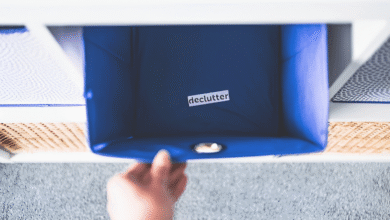How to Buy Your First Home Without Breaking the Bank
First-time homebuyer tips: how to buy your first home affordably with expert strategies for saving, budgeting, and securing the best mortgage deals.

Buying your first home is a monumental milestone, but it can also feel like a daunting financial challenge. For many, the dream of homeownership seems out of reach due to rising property prices, high interest rates, and the fear of overwhelming debt. However, with careful planning, strategic decision-making, and a clear understanding of the process, it is entirely possible to buy your first home without breaking the bank. This guide will walk you through every step of the journey, from saving for a down payment to closing the deal, ensuring you make informed choices that align with your financial goals.
In this article, we’ll explore practical tips, hidden costs to watch out for, and creative strategies to make homeownership more affordable. Whether you’re a first-time buyer or simply looking for ways to save money during the process, this comprehensive guide will equip you with the knowledge and confidence to navigate the real estate market successfully. By the end, you’ll understand how to stretch your budget, avoid common pitfalls, and turn your dream of owning a home into a reality.
Understanding Your Financial Situation
Before diving into the home-buying process, it’s crucial to assess your financial health. Start by reviewing your credit score, as this will significantly impact the mortgage rates you qualify for. A higher credit score can save you thousands of dollars over the life of your loan. If your score is lower than expected, take steps to improve it by paying down debt, making timely payments, and correcting any errors on your credit report.
Next, evaluate your savings. While it’s possible to buy a home with a low down payment, having a substantial amount saved will give you more flexibility and reduce your monthly mortgage burden. Aim to save at least 20% of the home’s purchase price for a down payment, as this will help you avoid private mortgage insurance (PMI), which can add to your monthly expenses.
Additionally, calculate your debt-to-income ratio (DTI). Lenders use this metric to determine how much of your income is already committed to debt payments. A lower DTI increases your chances of qualifying for a mortgage and securing favorable terms. If your DTI is too high, consider paying off some debt before applying for a loan.
Finally, create a realistic budget that accounts for all the costs associated with homeownership, including property taxes, insurance, maintenance, and utilities. Understanding your financial limits will help you avoid overextending yourself and ensure you choose a home that fits comfortably within your means.
Saving for a Down Payment
One of the biggest hurdles for first-time homebuyers is saving for a down payment. While it may seem overwhelming, there are several strategies to make this process more manageable. Start by setting a specific savings goal based on the price range of homes you’re considering. Break this goal into smaller, monthly targets to make it feel more achievable.
Consider automating your savings by setting up a direct deposit into a dedicated savings account. This ensures that a portion of your income goes toward your down payment before you have a chance to spend it. Additionally, look for ways to cut unnecessary expenses, such as dining out, subscription services, or impulse purchases, and redirect those funds into your savings.
Take advantage of down payment assistance programs, which are often available to first-time buyers. These programs, offered by government agencies, non-profits, and even some employers, can provide grants or low-interest loans to help cover your down payment and closing costs. Research the options available in your area and determine if you qualify.
Another creative way to boost your savings is to generate additional income. Consider taking on a side gig, selling unused items, or renting out a spare room. Every extra dollar you earn can bring you closer to your goal of homeownership.
Lastly, be patient and disciplined. Saving for a down payment takes time, but the financial security and peace of mind it provides are well worth the effort. Remember, the more you can put down upfront, the less you’ll have to borrow, and the lower your monthly payments will be.
Exploring Mortgage Options
Choosing the right mortgage is a critical step in the home-buying process. There are several types of mortgages available, each with its own pros and cons. Understanding your options will help you select the one that best suits your financial situation and long-term goals.
The most common type of mortgage is the fixed-rate mortgage, which offers a consistent interest rate and monthly payment over the life of the loan. This stability makes it an attractive option for buyers who plan to stay in their home for many years. On the other hand, adjustable-rate mortgages (ARMs) start with a lower interest rate that can fluctuate over time, making them a riskier choice but potentially more affordable in the short term.
Government-backed loans, such as FHA, VA, and USDA loans, are designed to make homeownership more accessible for specific groups of buyers. FHA loans, for example, require a lower down payment and are more lenient with credit scores, making them ideal for first-time buyers. VA loans offer favorable terms to veterans and active-duty military personnel, while USDA loans are tailored for buyers in rural areas.
When comparing mortgage offers, pay close attention to the interest rate, loan term, and closing costs. Even a small difference in the interest rate can have a significant impact on the total amount you’ll pay over the life of the loan. Don’t hesitate to shop around and negotiate with lenders to secure the best possible terms.
Finally, consider getting pre-approved for a mortgage before you start house hunting. Pre-approval not only gives you a clear idea of how much you can afford but also demonstrates to sellers that you’re a serious buyer, giving you an edge in competitive markets.
Finding the Right Home
Once you’ve secured your financing, the next step is to find the right home. Start by identifying your priorities, such as location, size, and amenities. Create a list of must-haves and nice-to-haves to help narrow down your options and focus your search.
Work with a reputable real estate agent who understands your needs and budget. A good agent can provide valuable insights into the local market, help you negotiate the best price, and guide you through the complexities of the buying process. Don’t be afraid to interview multiple agents to find someone you trust and feel comfortable working with.
When touring homes, pay attention to both the property itself and the surrounding neighborhood. Consider factors like school districts, commute times, and future development plans, as these can impact your quality of life and the home’s resale value. Don’t rush the process—take your time to find a home that truly meets your needs and feels like a good investment.
Be prepared to compromise. While it’s important to stick to your budget and priorities, you may need to make some concessions to find a home that fits your criteria. For example, you might have to settle for a smaller yard or fewer upgrades if it means staying within your price range.
Finally, trust your instincts. Buying a home is a significant decision, and it’s essential to choose a property that feels right for you. If something doesn’t feel right, don’t be afraid to walk away and continue your search.
Navigating the Closing Process
The closing process is the final step in buying your first home, but it can also be one of the most complex. During this stage, you’ll finalize your mortgage, sign a mountain of paperwork, and officially take ownership of the property. To ensure a smooth closing, it’s important to stay organized and proactive.
Start by reviewing your closing disclosure, which outlines the final terms of your loan and the costs associated with the transaction. Compare this document to the loan estimate you received earlier to ensure there are no surprises. If you notice any discrepancies, address them with your lender immediately.
Next, schedule a home inspection to identify any potential issues with the property. While this is an additional expense, it can save you from costly repairs down the line. If the inspection reveals significant problems, you may be able to negotiate with the seller to have them addressed or adjust the purchase price accordingly.
Be prepared to pay closing costs, which typically range from 2% to 5% of the home’s purchase price. These costs include fees for the appraisal, title search, and attorney services, among others. Make sure you have the necessary funds available and confirm the exact amount with your lender ahead of time.
On the day of closing, bring a government-issued ID, proof of insurance, and a cashier’s check or wire transfer for the down payment and closing costs. Carefully review all documents before signing, and don’t hesitate to ask questions if anything is unclear.
Once the paperwork is complete, you’ll receive the keys to your new home. Congratulations—you’re officially a homeowner!
Read More: How to Build a Smart Home on a Budget
Conclusion
Buying your first home is a significant financial and emotional milestone, but it doesn’t have to be an overwhelming experience. By understanding your financial situation, saving strategically, exploring mortgage options, and working with the right professionals, you can navigate the process with confidence and ease. Remember, the key to buying a home without breaking the bank is careful planning, informed decision-making, and a willingness to adapt as needed.
As you embark on this exciting journey, keep your long-term goals in mind and stay focused on what truly matters to you. With patience, perseverance, and the right approach, you’ll find a home that not only fits your budget but also fulfills your dreams. Homeownership is within reach—take the first step today and make it a reality.
FAQs
How much should I save for a down payment?
Aim to save at least 20% of the home’s purchase price to avoid private mortgage insurance (PMI). However, some loans allow for lower down payments, so explore your options.
What credit score do I need to buy a home?
A score of 620 or higher is typically required for conventional loans, but government-backed loans may accept lower scores. A higher score can secure better interest rates.
How long does the home-buying process take?
The process can take anywhere from a few weeks to several months, depending on factors like market conditions, financing, and the complexity of the transaction.
What are closing costs, and how much are they?
Closing costs include fees for services like appraisals, title searches, and attorney services. They typically range from 2% to 5% of the home’s purchase price.
Can I buy a home with student loan debt?
Yes, but your debt-to-income ratio (DTI) will be a key factor. Paying down debt and improving your credit score can increase your chances of qualifying for a mortgage.








One Comment